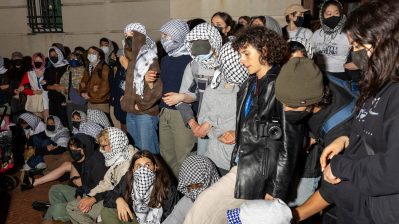What’s your favorite Olympic mascot?
Share Now on:
What’s your favorite Olympic mascot?
Munich 1972 — Waldi
The first-ever Olympic mascot was Waldi, a daschund — a popular breed of dog from Germany. The mascot was designed by Otl Aicher and modeled on a real dog. His head and tail were blue and his body was stripes of most of the other Olympic colors, excluding those related to the Nazi Party.
Sapporo 1972 — No mascot
Montreal 1976 — Amik
A beaver named Amik represented the Montreal Olympics. The name is taken from the Algonquian language, which is the most popular language amongst the Aboriginal people in Canada. “Amik” means beaver.
Innsbruck 1976 — Schneeman
Schneeman, German for snowman, symbolized the “Games of Simplicity.”
Moscow 1980 — Misha
Misha the bear, whose full name was Mikhail Potapych Toptygin, was designed by Victor Chizikov, an illustrator of children’s books. He was the first mascot to
Lake Placid 1980 — Roni
A live raccoon named Rocky was supposed to be the mascot of the 1980 Winter Olympics, but he died before the Games began. So he was replaced by Roni, designed by graphic designer Donald Moss. The mask across its eyes is supposed to be similar to the goggles and caps skiers wear.
Los Angeles 1984 — Sam
Sam is a bald eagle, the national bird of the U.S. And shares the name of Uncle Sam, another American symbol. He was designed by C. Robert Moore, an artist for Disney.
Sarajevo 1984 — Vucko
Readers of Yugoslav newspapers voted on the mascot for the 1984 Winter Olympics from a list of six finalists. Vucko, a little wolf, was designed by Joze Trebec.
Seoul 1988 — Hodori
There were two mascots for the Summer Games in South Korea, Hodori and Hosuni. Hodori was by far the most popular. The tiger was selected because it appears in many Korean legends.
Calgary 1988 — Hidy and Howdy
Hidy and Howdy are were twin polar bears who wore cowboy-style outfits.
Barcelona 1992 — Cobi
Cobi was designed by cartoonist Javier Mariscal. It is a Catalan Sheepdog in Cubist style.
Albertville 1992 — Magique
No one liked Albertville’s initial mascot, a mountain goat named Chamois, so artist Philippe Mairesse designed Magique, a star-shaped imp.
Lillehammer 1994 — Haakon and Kristin
The first human mascots were Haakon and Kristin, two Norwegian kids in traditional folklore.
Atlanta 1996 — Izzy
Izzy was a computer-animated character that could change shapes, a break from traditional Olympic mascots because it didn’t represent an animal or human figure. It was not very popular with the media.
Nagano 1998 — Sukki, Nokki, Lekki, and Tsukki
The original mascot for the Games was a weasel named Snowple, but he was replaced by four snow owls named Sukki, Nokki, Lekki, and Tsukki — also known as the Snowlet. The names were chosen from 47,484 suggestions sent in by the public.
Sydney 2000 — Millie (with Olly and Syd)
Olly, a kookaburra, is named for the Olympics and represents universal generosity; Syd, a platypus, is named for Sydney and represents the energy of Australia; Millie (pictured here), an echidna, is named for the millennium and is an information whiz.
Salt Lake City 2002 — Powder, Copper, Coal
The three animals were chosen from Native American folklore to reflect the Olympic motto: The snowshoe hare is faster (Citius); the coyote is higher (Altius); the American black bear is stronger (Fortius).
Athens 2004 — Athena and Phevos
Athena and Phevos are anthropomorphic mascots. According to the official mascot website, “their creation was inspired by an ancient Greek doll and their names are linked to ancient Greece, yet the two siblings are children of modern times – Phevos and Athena represent the link between Greek history and the modern Olympic Games.”
Torino 2006 — Neve and Gliz
Neve (“snow” in Italian) is a female snowball, and Gliz is a male ice cube.
Beijing 2008 — Beibei, Jingjing, Huanhuan, Yingying, Nini
From the Beijing Olympics website: “Like the Five Olympic Rings from which they draw their color and inspiration, Fuwa will serve as the Official Mascots of Beijing 2008 Olympic Games, carrying a message of friendship and peace — and good wishes from China — to children all over the world.” Beibei is the Fish, Jingjing is the Panda, Huanhuan is the Olympic Flame, Yingying is the Tibetan Antelope and Nini is the Swallow.
Vancouver 2010 — Miga and Quatchi
The mascots for the Games are Miga and Quatchi, and for the 2010 Winter Paralympics, Sumi, as well as their “sidekick” Mukmuk.
London 2012 — Wenlock
The one-eyed figures were chosen after 18 months and 40 focus groups. Wenlock is pictured here with Mandeville (in blue), the Paralympic mascot.
There’s a lot happening in the world. Through it all, Marketplace is here for you.
You rely on Marketplace to break down the world’s events and tell you how it affects you in a fact-based, approachable way. We rely on your financial support to keep making that possible.
Your donation today powers the independent journalism that you rely on. For just $5/month, you can help sustain Marketplace so we can keep reporting on the things that matter to you.


















